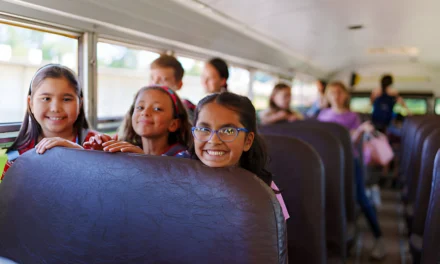Raising siblings can be tough. The constant bickering and jealousy can feel overwhelming. But, there are ways to reduce sibling rivalry and create a more peaceful home. Sibling rivalry is common, but you can help your kids get along better.
Sibling rivalry often comes from feeling valued and loved. When a new baby arrives, older kids might feel left out. This can start a cycle of competition and hurt feelings.
But, there are ways to make things better. By teaching your kids to be kind to each other, setting routines, and helping them solve problems, you can reduce rivalry. This helps them develop a supportive relationship.
Key Takeaways
- Understand the root causes of sibling rivalry, such as the need to feel valued and loved.
- Encourage prosocial behavior and conflict resolution skills in your children1.
- Establish family routines to manage everyday disagreements more efficiently1.
- Act as a problem-solving coach, teaching your children how to handle disputes and play fairly1.
- Plan ahead to handle disagreements by setting boundaries and consequences1.
By using these strategies, you can help your kids support each other. Remember, sibling rivalry is normal, but with the right approach, your kids can learn to get along and form strong bonds.
What is Sibling Rivalry?
Sibling rivalry is a common issue between brothers and sisters. It’s about the competition and dislike that can grow between them2. About one-third of adults say they have a rivalrous or distant relationship with their siblings2. But, as people get older, especially over 60, many siblings become closer2.
This rivalry often shows up in siblings who are close in age. But it can also happen with bigger age gaps or between non-blood siblings3. Even before a new sibling arrives, conflicts can start3. The most intense rivalry is usually seen between 10 and 15 years old2.
Siblings have one of the longest-lasting relationships we form. They teach us important social skills like sharing and managing fights2. But, too much competition can make things toxic and hurtful, especially if parents encourage it2.
The Psychology Behind Sibling Rivalry

Sibling rivalry is more than just fighting for attention. It involves deep emotional and developmental factors4.
Firstborns often feel safe and loved by their parents. But when a new sibling arrives, they might feel insecure. They may feel the need to compete for their parents’ attention4.
Even small changes in how parents interact can make a sibling feel threatened. This can lead to jealousy and misunderstandings5.
Different stages of development and desires for attention can cause jealousy. The attachment theory shows that secure relationships with parents can help siblings bond5.
| Causes of Sibling Rivalry | Percentage |
|---|---|
| Sibling violence and aggression | 80-96% |
| Rough-and-tumble play (positive) | Observed as early as 18 months |
| Verbal abuse (most prevalent) | Includes insults, name-calling, and threats |
Understanding the psychology of sibling rivalry helps parents. They can work to create a more peaceful environment for their children45.
Why Does Sibling Rivalry Occur?
When a new sibling arrives, it’s a big change for the oldest child. They used to get all the attention from their parents. A survey of 2,000 adults in the UK showed that over half still feel in competition with their6. This can cause jealousy, resentment, and a fight for love and resources.
Adults still compete with their siblings in many areas, like owning a home or hosting family events6.
As kids grow, they might fight over toys. Younger siblings may get tired of being bossed by the older one. Many adults said they compete with their siblings over jobs, and it has driven them to succeed6.
Young children often can’t say how they feel. So, they might act out by not sharing, hitting, pushing, and yelling.
The Roots of Sibling Rivalry
Big changes like moving, expecting a new baby, or divorce can make siblings fight more7. Young children and those with big age gaps are more likely to fight7. Kids naturally want to be their own person, which can lead to rivalry in things like building or racing7.
Seeing parents fight can teach kids bad ways to deal with problems, making sibling rivalry worse7. Family dynamics, like treating kids differently, can also affect how they get along7. Parents who always praise one child or make them compete can make things worse7.
Sibling rivalry can show up in many ways, like fighting, name-calling, and constant competition for attention7. Knowing why it happens is the first step to helping your kids get along better.
Sibling Rivalry

While you can’t completely eliminate sibling rivalry, there are strategies parents can use to reduce its frequency and intensity. Studies suggest that being treated differently by parents, whether real or perceived, is a consistent predictor of sibling rivalry, persisting into adulthood and even after parental death8 To address this, avoid labels that foster comparison between siblings and arrange for one-on-one attention with each child.
Teach conflict resolution skills through role-playing, and allow children to work out some disagreements on their own with minimal intervention. Research indicates that tensions between siblings can mount over perceived differences in happiness or success, leading to verbal conflicts such as disdainful remarks or sarcasm8 By creating a cooperative environment, celebrating each child’s individuality, and providing tools for managing emotions and solving problems, parents can help their children learn to get along better and deal with conflicts in a more positive way.
- Avoid labels that foster comparison between siblings
- Arrange for one-on-one attention with each child
- Teach conflict resolution skills through role-playing
- Allow children to work out some disagreements on their own with minimal intervention
As adults, individuals can choose to be more intentional about their choices and behaviors, in contrast to the impulsive nature of childhood interactions.8 This can be crucial in repairing strained sibling relationships, particularly by acknowledging past behaviors and working towards positive changes.
While sibling rivalry may be unavoidable, parents can take proactive steps to manage it. By fostering cooperation, respecting individuality, and equipping children with conflict resolution skills, families can navigate these challenges and strengthen sibling bonds over time.
Show Children How to Get Along
Parents are the main role models for their kids, especially when it comes to getting along with siblings. By being respectful and cooperative with each, parents show their kids what’s important9. This means solving problems calmly, saying sorry when needed, and valuing each other’s differences10. Seeing their parents act this way helps kids learn to do the same with their siblings.
- Encourage each child to have their own interests to avoid feeling unfair11.
- Stay neutral in sibling fights to let kids figure it out on their own11.
- Make sure each child gets 10-15 minutes of one-on-one time daily to lessen rivalry10.
- Use role-playing to teach kids how to solve conflicts after they happen10.
By acting as good role models, parents help their kids learn to get along with their siblings9. This not only makes family life better but also helps kids make healthy relationships later on.
| Strategies to Minimize Sibling Rivalry | Potential Benefits |
|---|---|
| Creating a cooperative environment and celebrating individuality | Reduces jealousy and competition between siblings |
| Planning fun family time | Strengthens sibling bonds and creates positive associations |
| Treating kids fairly based on individual needs | Mitigates perceived unfairness and resentment |
| Providing problem-solving tools | Equips children with skills to resolve conflicts constructively |
“Listening to children’s feelings during conflicts can help resolve disagreements and prevent future disputes.”10
By using these strategies and acting as good role models, parents can help their kids build strong relationships with their siblings9. This makes for a happier home and prepares kids for good relationships in the future.
Catch Children Behaving Positively
When you tell children what they’re doing right, they’re more likely to do it again12. Positive reinforcement helps when kids are kind, respectful, and problem-solvers12. Specific praise, like “I like how you’re taking turns,” shows them what’s good12.
This method works better than just scolding bad behavior12.
Dr. Stephanie Lee says to praise kids for playing well together more than for fighting13. She advises parents to praise kids for playing together in the moment13. This way, kids learn to appreciate each other’s efforts13.
By using positive reinforcement and praising good behavior, parents teach kids valuable lessons12. This method boosts cooperation and helps kids develop important life skills12. Learn more about managing sibling rivalry1213.
Set Clear Family Rules
Creating clear family rules is key to handling sibling rivalry14. Studies show that 85% of preventing and managing sibling rivalry comes from setting these rules14. When kids help make the rules, they’re more likely to follow them15.
Family rules should be positive, like “We speak politely to others.”15 Parents must remind and enforce rules when broken. This shows how important they are14.
- Make clear rules for good behavior, like “No hitting or name-calling.”
- Get kids involved in making rules to make them feel responsible.
- Always follow through with rules and consequences for breaking them.
- Show the behaviors you want your kids to have by being a good example.
By setting and enforcing clear rules, parents can make a more peaceful home. This helps reduce sibling rivalry14. Adding strategies like giving each child attention and teaching them to solve problems can also help15.
Set Up Routines
Creating consistent family routines can really help reduce sibling rivalry16. Siblings often disagree many times an hour16. Conflicts like fighting, stealing, and name-calling are common16. A predictable schedule for daily activities and resources can help prevent these issues.
Consistent routines give kids a sense of structure and fairness. They’ll know whose turn it is for things like TV, the trampoline, or baths17. A survey by the American Psychological Association shows 65% of parents believe teaching kids how to resolve conflicts is key17. Routines help set clear expectations and reduce disputes over shared things or activities.
Encouraging positive interactions can help prepare children for negative ones.16 A predictable schedule supports kids in learning to get along17. The National Institute of Child Health and Human Development found sibling rivalry peaks in kids aged 2 to 7, with 82% of parents reporting regular conflicts17. Consistent routines can make your home more peaceful.
17 A University of Illinois study found 80% of children experience sibling rivalry17. Clear routines give kids the skills to manage their relationships and solve problems on their own as they get older.
Coach Your Children
Parents can be more than just referees in fights. They can be coaches teaching kids how to solve problems. They can help kids learn to share, negotiate, and work together. They also show how to disagree respectfully when opinions differ18.
By teaching kids to manage their feelings and find solutions, parents help them grow. This helps them in their relationships with siblings and in life18.
Teaching Conflict Resolution
Parents can teach kids how to solve conflicts. They help kids understand and share their feelings. They also teach them to listen and find solutions that work for everyone18.
By showing these skills and giving kids chances to practice, parents help them deal with disagreements. They learn to do so with empathy and cooperation18.
- Encourage siblings to share their feelings using “I” statements, like “I feel upset when you take my toy without asking.”
- Teach them to take turns and negotiate, like “You can play with the toy first, then I’ll have a turn.”
- Guide them in finding creative solutions that meet everyone’s needs.
By guiding kids through conflicts, parents help them develop important skills. These skills will help them in their relationships with siblings and beyond18.
“With your guidance, children can learn to resolve conflicts in a healthy, constructive way, building a foundation for positive relationships throughout their lives.”
Cool Down Fighting Hot Spots
As a parent, you can plan ahead to stop preventing sibling fights. At home, make sure there are enough toys for everyone. Give each child their own space and distract them when fights start. Out in public, give them jobs or games to keep them busy. This helps manage conflict hot spots before they get worse19.
Sibling fights are common, especially in young kids who don’t know how to solve problems19. Parents might unknowingly make things worse by not meeting their kids’ needs19. When these needs aren’t met, fights and rivalry can quickly get out of hand19.
- Spend 10 minutes one-on-one with each child daily to stop negative behaviors like fighting19.
- Make sure your kids get enough sleep. They’ll be less likely to fight19.
- Focus on effort and positive traits, not just natural talents. This motivates kids to do their best19.
When fights happen, stay calm until they get physical. This helps avoid making things worse19. Instead of judging, offer calm, neutral advice. This can help calm things down19.
After a fight, check on your kids’ safety and treat any injuries together. This helps end the fight and prevent more19.
Sibling rivalry can include hitting and name-calling, says the Mayo Clinic20. It’s often linked to birth order and how siblings interact20. But, if handled right, it can make kids more mature and emotionally developed20.
Using the “No-Lose” method and Dorothy Rowe’s approach can help kids solve problems fairly20. Parents should try not to get too involved in fights. Healthy disagreements can help kids grow20.
Let Children Work It Out Sometimes
It’s key for parents to step in when sibling fights get too intense or turn physical. But, letting kids solve some of their own fights is super helpful. This lets them practice what they’ve about solving problems calmly and finding common ground21.
Parents can remind kids about the rules and offer some advice. They should also praise kids when they solve problems well. This helps kids learn to solve problems on their own and improves their relationships21.
Siblings often fight over things like who gets to play first or who gets to use a toy. Even though these fights can be tough for parents, they’re a chance for kids to learn how to deal with disagreements22.
When fights happen, parents can help kids talk about their feelings and find ways to agree. This stops fights from getting worse and teaches kids important life skills22.
Having sibling fights is normal in families. By letting kids handle some fights on their own, parents help them learn to solve problems and communicate better. This makes their relationships stronger21.
| Benefit of Allowing Sibling Conflict Resolution | Impact |
|---|---|
| Develops independent problem-solving skills | Children learn to negotiate, compromise, and find solutions on their own, building conflict resolution competencies. |
| Strengthens sibling relationships | Working through disagreements helps siblings develop empathy, communication, and cooperation skills. |
| Reduces parental stress | When children can resolve minor conflicts independently, parents can focus on more serious issues and provide guidance as needed. |
| Mirrors adult interactions | Sibling rivalries can resemble workplace dynamics, preparing children for future interpersonal challenges. |
By letting siblings solve their fights in a good way, parents help them grow. This approach helps kids learn important skills for life and strengthens family ties21.
Conclusion
Sibling rivalry is a common part of family life. But, parents can take steps to reduce its impact23. By showing good behavior, creating a team atmosphere, and teaching how to solve problems, parents can help siblings get along better23.
While some rivalry is natural, using these strategies can make the home more peaceful. It also strengthens the bond between siblings.
Sibling rivalry often comes from wanting more of something limited, like attention or toys23. This can make kids feel jealous and competitive from a young age23. Problems can arise when kids share or compete for attention at family events23.
23 Short-term rivalry can make kids feel bad about themselves and anxious23. But, it can also teach them to work together and value family ties23. By tackling these issues, parents can turn rivalry into a positive force in their children’s lives23.





